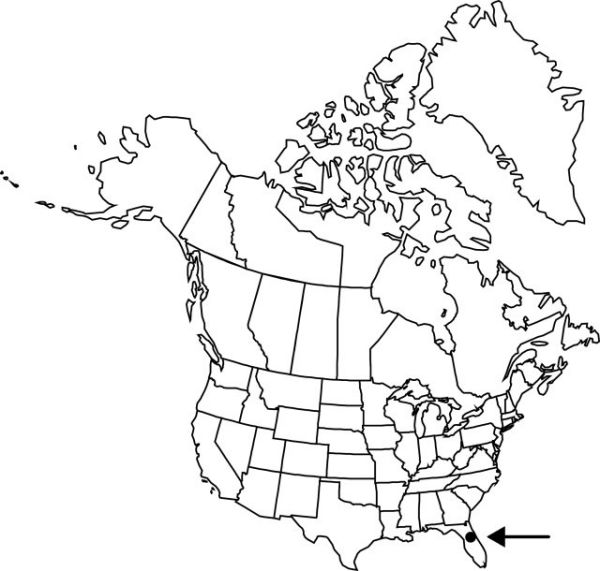Sacoila squamulosa
Bot. Mus. Leafl. 28: 352. 1982.
Herbs, terrestrial or lithophytic, 30–60(–75) cm. Leaves absent at flowering time, 2–8, short-petiolate; blade elliptic to broadly lanceolate, 30 × 5 cm, apex acute to obtuse. Inflorescences 8–18 cm; rachis scurfy with white dots; floral bracts red, lanceolate, 15–25 mm, exceeding ovary, scurfy. Flowers brick red, 15–50; dorsal sepal 15–18 × 5 mm; lateral sepals 24 × 3.5 mm, connate for 5–7 mm over basal portion of mentum, distinct portion of mentum 15–18 mm, about 2/3 length of ovary; petals 18–24 × 3–6 mm; lip brick red to pale red, 20–24 × 6 mm; column 11 mm from attachment of dorsal sepal to tip, foot extending back 11–12 mm; pollinaria 4–5 mm, viscidia 3–3.5 mm; pedicellate ovary 10–13 mm; rostellum 4–5 mm. Capsules 10–13 × 7 cm, scurfy. Seeds largely monoembryonic.
Phenology: Flowering Apr–May.
Habitat: Open or wooded, dry–moist including poorly drained pinelands on calcareous substrates
Elevation: 0–30 m
Distribution

Fla., Mexico, West Indies, Central America, n South America.
Discussion
Sacoila squamulosa is widespread in tropical and subtropical America. Although often overlooked in Florida, it was included in the range of Stenorrhynchos squamulosum (M. Nir 2000), and details were given for its inclusion in the Florida flora (P. M. Brown 2000b). That resulted in determining that a large stand of nonconforming Sacoila in Marion County was indeed this species. It is a tall and handsome plant that, upon close examination, has the unmistakable scurfy or hoary dots instead of the short pubescence of Sacoila lanceolata. This is one of the most recent additions to the orchid flora of Florida and the United States. Plants have been either overlooked or not well distinguished from the more common S. lanceolata var. lanceolata. Knowledge of the range in Florida is incomplete, pending further study.